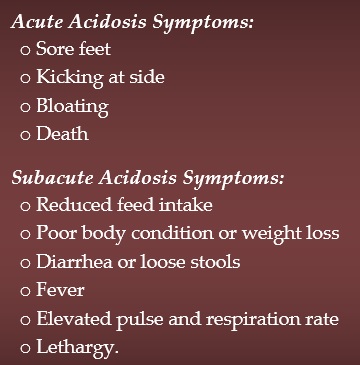 As the name suggests, Rumen Acidosis affects ruminants such as cattle, sheep, goats, etc. It is the most common nutritional disorder seen on cattle operations. However, there are simple steps we can take to prevent acidosis from occurring.
As the name suggests, Rumen Acidosis affects ruminants such as cattle, sheep, goats, etc. It is the most common nutritional disorder seen on cattle operations. However, there are simple steps we can take to prevent acidosis from occurring.
The normal pH of the rumen sits around 6.0 – 7.0. Acidosis occurs when the pH of the rumen falls below 5.5. When the pH drops, rumen motility slows which reduces appetite. The pH changes due to the acid-producing bacteria flourishing, the more acid the bacteria produce the worse the acidosis gets. The rumen wall will then begin to absorb the acid causing metabolic acidosis – in severe cases this can lead to shock and death.
The primary cause of acidosis is feeding high amounts of rapidly digestible carbohydrates including cereal grains, fine ground corn, etc. It can also be triggered by an animal going off feed for any reason (weaning or transportation stress, sickness/injury, heat stress, etc.) and then returning to feed and overconsuming.
In beef animals, acute acidosis is more commonly recognized and often results in death. In dairy cattle, sub-acute acidosis (SARA) is more commonly recognized. Both types of acidosis result in serious animal health and welfare issues, lower production, and economic setbacks. At first glance, the impact of SARA may seem less severe than acute acidosis where death is a very real possibility. However, the economic effects of SARA are far greater due to poor performance and efficiency, along with higher processing costs due to carcass defects and liver abscesses.
Prevention is key when it comes to acidosis. Maintain a healthy rumen environment with consistent and balanced feed intake. Provide cattle with sufficient effective fibers sources.
Keep in mind, for every animal showing clinical signs there are likely several more affected sub-clinically. Work with your Famo Feeds dealer or nutritionist on strategies to prevent acidosis on your operation.
Acidosis – Overview
Famo Feeds • 446 Industrial Dr • Freeport, MN • 800-450-2145 |

